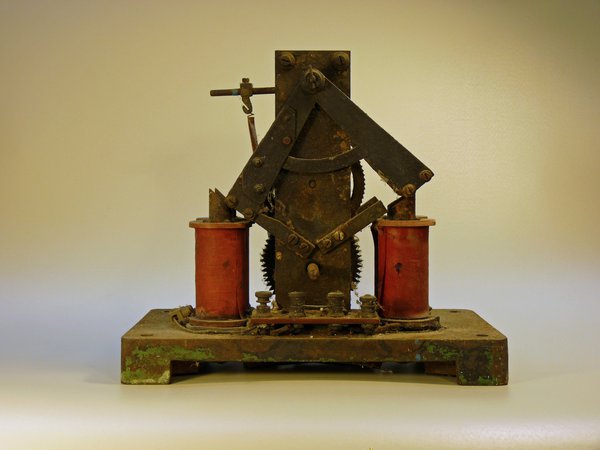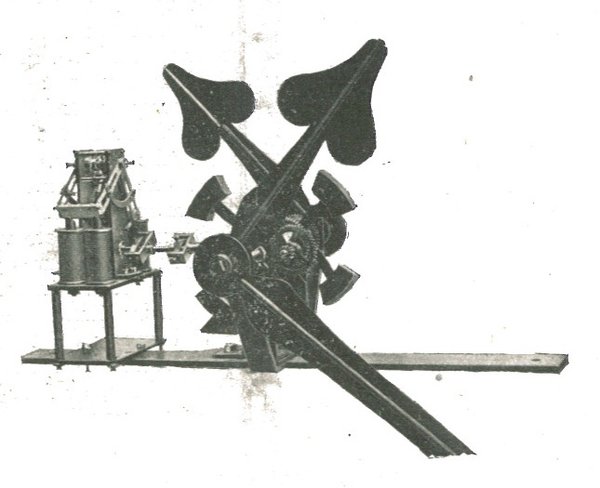A eureka moment of recognition
This post was written by James Nye
Sometimes, every once in a while, one’s record-keeping comes up trumps. Rooney and I wrote up the history of the Standard Time Company in Antiquarian Horology back in 2007, and widened our scope in the BJHS.
Since then, very little further factual detail has come to light. Certainly there has been a dearth of newly found objects badged STC – which is a shame. We had hoped our piece would bring to light more clocks and ephemera.

Keith Scobie-Youngs of the Cumbria Clock Company unearthed an unusual tower slave last year, which a couple of us thought might well be from STC, but we lacked any evidence. It is of very distinctive form and bears no signature, or if there is one it is beneath layers of typical clock-tower grime. Despite no obvious identifying marks on the corpse, there was nevertheless buried deep in my memory a faint recollection of something of this form.
I didn’t spring naked from my bath and run around West Norwood, I admit, but I did just have that ‘Eureka’ moment, when I remembered having scanned a document that George Arthur, the authority on all matters related to Lowne clocks and instruments, had shown me, years ago.
In the 1920s, there was a period when Joseph William Molden, an Australian entrepreneur, had built a small electric clock empire, which brought together STC and Lowne for a time.

In the Lowne archive there is a picture, very faded, of precisely the device in question, mocked up with leading off work, sitting atop a leather stool. A typewritten description attached to the picture led me to the Horological Journal of 1920, and there, bold as brass, was our movement, titled ‘New Patent Electric Impulse Movement’.
Click here to see the patent. In conclusion, a neat tie-up between original documents and a recovered object. Too bad we still cannot locate one of the master clocks used to drive it, but we live in hope.
